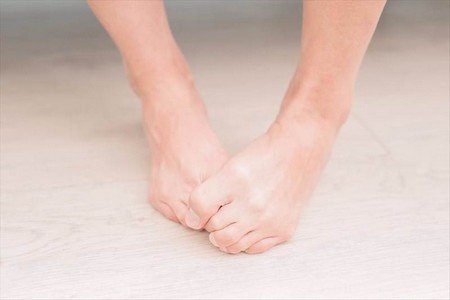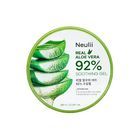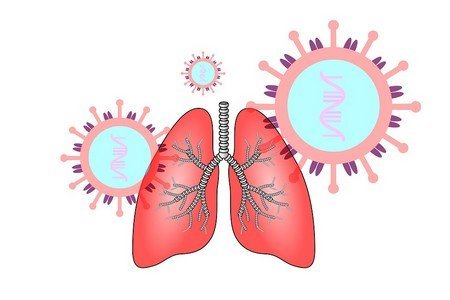Millions of tiny microbes or microorganisms are found throughout the natural world. Some microbes are helpful while others can be harmful to the human body. Fungi, a type of microbe can live in the air, water, soil, plants and can live naturally in the human body as well. The problem occurs when the fungus invades our body, making our immune system weak. It causes many types of fungal infections depending on the area of the body.
People with a weak immune system are more prone to fungal infections. When diagnosed early, it can be treated correctly. However, it can also re-infect the person after recovery. Seek prompt medical care to get rid of recurring fungal infection.
Types of Fungal Infections
There are many types of fungal infections including ringworm, athlete foot, jock itch, and tinea versicolor. A fungus generally thrives in moist areas of the body like between the toes, genital area, or under the breasts.
Ringworm (tinea corporis)
Easily the most common type of fungal infections, ringworm is noticeable, owing to the circular patches. This fungal infection is contagious and can spread through direct contact with humans, pets, infected soil, dirt, or objects. Heat and humidity can spread the infection further, so ensure precautions such as keep the area dry and clean, wear clean clothes, and maintain personal hygiene.

Symptoms of Ringworm
Scaly/itchy skin with bump or sore
Red and circular patches on the skin
Ringworm Control, 11 ml, Forces of Nature
from: VitaSprings.com
Athlete’s Foot (tinea pedis)
This typical fungal infection infects the skin of your feet, commonly between the toes. People who are into sports, exercising and physical activities often wear closed-toed footwear which makes them more prone to athlete’s feet. Closed-toed footwear becomes a stable breeding ground for fungi due to excessive sweating. In some cases, this infection can also spread to nails and hands.

Symptoms of Athlete’s Foot
Itchy skin between your toes/soles of the feet
A red, scaly, and dry skin
Blisters on the skin of the feet
One of the most common types of fungal infections in men and adolescent boys is Jock Itch. It causes an itchy red rash in the groin and inner thighs which can spread to the buttocks and abdomen region. This happens mainly due to extreme sweating as the moisture gets trapped in tight-fitting clothes. Maintain personal hygiene and wear loose-fitting clothes to tackle this infection.
Symptoms of Jocky Itch
Redness in the groin
Frequent itching/irritation along with cracked skin
Red circular rash with raised edge
Fungal infection of the skin (tinea versicolor)
Also called pityriasis Versicolor, this fungal infection causes discolored skin patches by interfering with the normal pigmentation of the skin. They occur on the back, chest, and upper arms and vary from red, pink, tan, or brown colored patches. It affects the top layer of the skin and happens mostly during summers or in areas with a warm, wet climate.
Symptoms of fungal infection of the skin
- Dry, itchy, and scaly skin
- Mild itching
- Patches of skin discoloration
Fungal infection of nails (onychomycosis)
This fungal infection is caused by the fungal infection in the part of the toe that makes the nail. The nail becomes brittle, thickens, and separates from the nail bed. Also known as tinea unguium, this fungal infection affects the fingernails and toenails, but most commonly the toenails. It begins mostly as a white or yellow spot under the tip of the toenail and causes discoloration when the fungus deepens.
Symptoms of fungal infection of the nail
- Brittle and flaky nails
- Discolored nails, typically yellow, brown, or white
- Curved shaped nail
Ringworm of the scalp (tinea capitis)
This type of ringworm infection can leave you with circular patches of bald spots on the scalp. The fungi called dermatophytes cause ringworm on the scalp. It affects your scalp and hair follicles, causing small patches of itchy and scaly skin. It can spread from one person to another by sharing combs, towels, hats, and even pillows.

Symptoms of ringworm on the scalp
Itchy/dry patches on the scalp
Small red bumps or rashes on the scalp
Patches with small black dots and brittle hairs
Yeast Infection (cutaneous candidiasis)
Amongst the myriad types of fungal infections, a yeast infection caused by candida fungi is fairly common. It can occur on any part of the skin but most often the areas like the armpits, between the finger, toes, and groin. Keeping the skin dry is vital to keep infection at bay. Some lifestyle changes like a quick change of damp clothes, socks, and undergarments regularly, and using scent-free soap can prevent the infection.
Symptoms of Yeast Infection
- red, itchy rash
- Intense itching with cracked skin
- Blisters or pustules
Itching under the breasts
Breast yeast infection is also a commonly found fungal infection in women. Fungal infections occur wherever there is friction with the skin. Excessive sweating or rubbing between the layers of skin can cause rashes. If the yeast overgrows, it can cause your skin to crack and bleed. Breast yeast infection can cause bad odor too.
Symptoms of itching under the breasts
- Shiny, red rash in the moist folds of the skin
- Constant itching and pain at the rash
- Blisters with bad odor

Neulii – Real Aloe Vera 92% Soothing Gel 300ml
Face Infection (Tinea Faciei)
Also called facial ringworm, as it appears as one or more pink to red scaly patches on parts of the face like cheeks, nose, chin, and forehead. It is contagious just by touch and can spread easily to other regions. In women and children, it appears on the face. However, in men, ringworm affects the beard and is also known as tinea barbae.
Symptoms of Face Infection
- Pink/red scaly patches on the face
- Bumps, blisters, or scabs on the affected area
- Constant itching
Most fungal infections can be treated with over-the-counter or prescription creams. However, one must give proper attention to personal hygiene to keep fungal infections at bay. Handwashing along with good hand hygiene should be practiced before and after touching or treating the area. The general recommendations for most types of fungal infections include early treatment of the affected people, avoiding public areas, maintaining proper foot hygiene, and keeping the infected areas clean.
Related Post:
Yeast Infection Causes, Symptoms, and Natural Treatments




